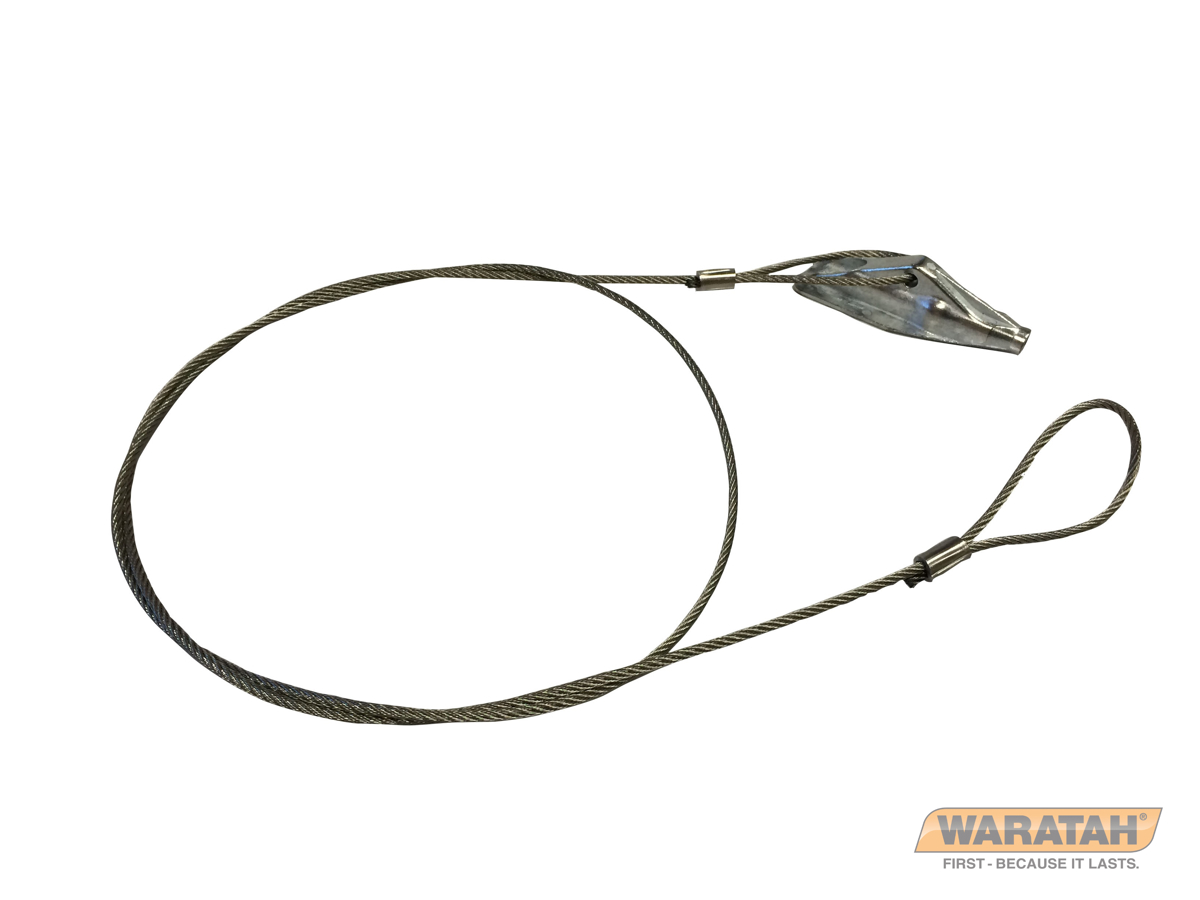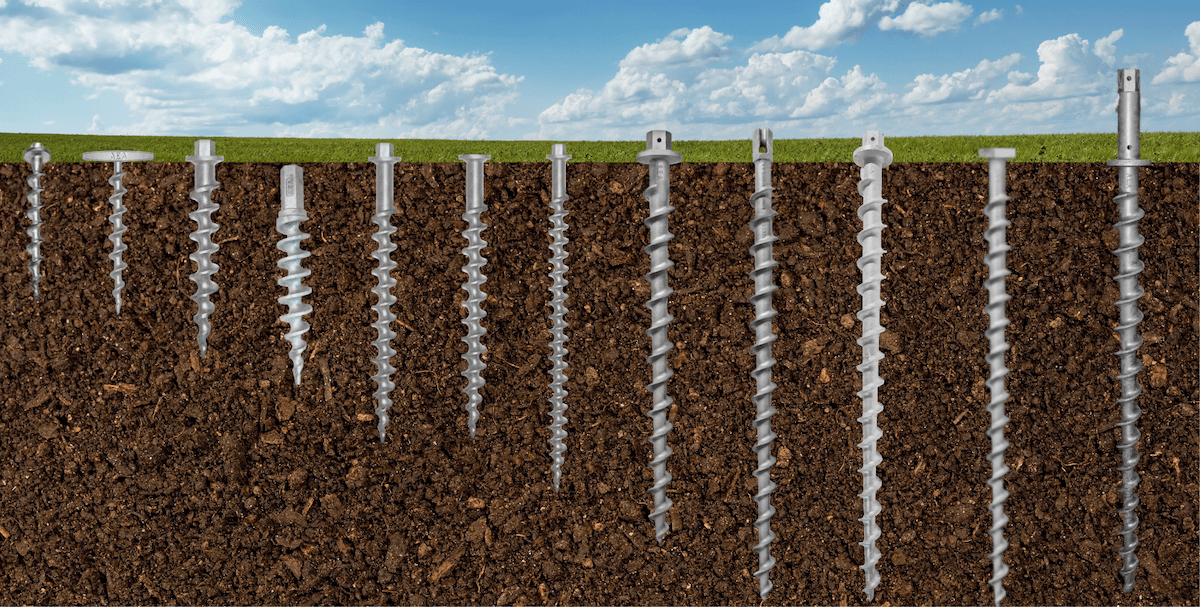Exactly How Sturdy Earth Anchors Work: A Comprehensive Guide to Dirt Anchoring Solutions
Sturdy Earth supports play an important function in giving security and support in different construction applications. By installing deeply into the ground, they withstand lateral and vertical pressures properly. Various kinds of supports accommodate various dirt problems, making them functional. Understanding their technicians and installment strategies is crucial for optimizing performance. What variables influence their performance, and exactly how do they contrast to traditional methods? The responses might shock you.
Recognizing Heavy-Duty Earth Anchors
Sturdy Earth anchors function as necessary elements in various construction and landscape design jobs, supplying stability and support in tough soil conditions. These anchors function by being embedded into the ground, where they resist lateral and upright pressures. Their style allows for secure add-on to frameworks, guaranteeing they stay anchored versus soil motion or outside loads.The efficiency of durable Earth supports mostly depends on the type of dirt and the support's installment deepness. Correct installment techniques are critical, as they establish the support's holding ability. Ecological variables, such as moisture and freeze-thaw cycles, can likewise influence performance.These anchors are regularly made use of in applications varying from protecting fencings and keeping wall surfaces to maintaining short-lived frameworks during negative weather conditions. Recognizing the principles behind sturdy Earth anchors is essential for specialists seeking to improve the durability and safety and security of their jobs.
Types of Heavy-Duty Earth Anchors
Numerous kinds of sturdy Earth anchors are designed to satisfy certain needs based on dirt conditions and job requirements. Helical anchors, featuring screw-like blades, are efficient in softer dirts, providing high lots capacities and very easy installment. Driven supports, which are inculcated the ground, appropriate for rough terrains and offer immediate tons assistance. Tie-back anchors are generally used in preserving wall surface applications, enabling lateral assistance by securing into the ground at an angle. Another kind is the cast-in-place support, suitable for concrete applications, as they are incorporated into structures for enhanced security. Soil screw supports are functional alternatives that can be utilized in different dirt types, giving trusted stress and compression capacities. Each kind offers distinct applications, guaranteeing security and safety and security in building and construction and landscaping projects. Recognizing these choices enables informed choices in selecting the suitable Earth securing solution.
The Mechanics of Dirt Anchoring

Understanding the mechanics of dirt anchoring calls for an exam of various types of Earth anchors and their setup methods. Each support type presents unique attributes that affect its performance in different soil conditions. Proper installment approaches are essential for taking full advantage of the securing system's stability and efficiency.
Sorts Of Earth Anchors
Earth supports, crucial parts in dirt anchoring systems, can be found in a number of kinds, each made for details applications and soil conditions. One of the most common types consist of screw supports, which are twisted into the ground, giving strong lateral resistance. Helical supports include blades that permit efficient setup in different dirt types, making them suitable for both irreversible and short-lived applications. Driven supports, generally made from steel, are hammered into the soil and work in dense or rocky atmospheres. Auger supports use a helical design to facilitate setup in softer dirts. Plate supports consist of a flat plate hidden flat, dispersing load over a bigger area, perfect for applications requiring high lots abilities in natural dirts.
Installment Methods Described
Appropriate setup strategies are important for the efficiency of dirt anchoring systems. The procedure usually begins with site assessment, validating the selected area can sustain the anchor's tons. After determining the proper anchor type, correct opening deepness and angle should be developed. The installment involves driving the support right into the ground utilizing specific tools, such as hydraulic or hand-operated drivers, to accomplish finest embedment. Post-installation, tensioning the support is vital to assure security; this is often confirmed with tons testing. Additionally, bordering soil conditions should be monitored to avoid variation. Following these techniques not just enhances the anchor's performance however also prolongs its life expectancy, offering reputable support for numerous applications.
Applications of Heavy-Duty Earth Anchors
While heavy-duty Earth anchors are usually connected with building and landscaping, their adaptability reaches a selection of applications throughout different markets. In civil design, they offer important assistance for keeping walls, making certain security in areas susceptible to dirt erosion. The aquatic field makes use of these supports for safeguarding anchors and marinas, avoiding motion brought on by tides and currents. Additionally, in the telecommunications industry, sturdy Earth supports are considerable for stabilizing cell towers and other high structures against wind forces. Agricultural applications additionally benefit, as these supports can protect frameworks like greenhouses and animals fence, ensuring they stand up to harsh weather conditions. In eco-friendly power tasks, such as wind farms, Earth anchors play an essential role in protecting generator structures, enhancing overall safety and security and performance. This wide range of applications highlights the flexibility and reliability of sturdy Earth anchors across various fields.
Advantages Over Traditional Anchoring Methods
Conventional anchoring techniques have actually long been depended upon for security, durable Earth anchors supply significant benefits that boost efficiency and efficiency. One major advantage is their remarkable load-bearing capability, which allows them to about his endure better pressures without failing. This toughness makes them suitable for requiring applications, such as in building and utility installations.Additionally, sturdy Earth supports are designed for deeper setup, offering greater security in different soil conditions, including sandy or loose dirts. Their resistance to deterioration and environmental elements guarantees a longer lifespan and reduced maintenance expenses compared to conventional methods.Moreover, these supports can be installed with marginal disruption to the surrounding area, maintaining the integrity of the landscape. Overall, durable Earth anchors present a reliable and reliable remedy for anchoring requirements, exceeding the restrictions commonly connected with conventional anchoring techniques.
Setup Refine and Ideal Practices
The setup procedure for dirt anchoring services starts with extensive preparation and site evaluation to guarantee peak efficiency. Following this, a step-by-step setup guide offers clear guidelines for efficient execution (tensile load anchors). Following these ideal methods is necessary for attaining reliable and long-lasting anchoring outcomes
Prep Work and Website Assessment
Effective prep work and thorough website analysis are important action in the installment of dirt securing remedies. Prior to installment, the dirt type must be analyzed to establish its bearing capability and viability for securing. Carrying out a geotechnical survey can give vital info regarding dirt structure, moisture levels, and possible ground movement. In addition, determining existing structures, greenery, and energies is vital to avoid interference throughout installment. The area needs to be free from particles and challenges to ensure risk-free accessibility for equipment. Climate condition should additionally be monitored, as negative conditions can influence both safety and setup effectiveness. By carefully preparing the website and reviewing all relevant aspects, the likelihood of effective support efficiency is considerably boosted.
Step-by-Step Setup Overview
An extensive setup process is essential for attaining optimal performance of soil anchoring solutions. The setup starts with selecting the ideal anchor kind and assuring the website is free from particles. Next off, correct hole placement is identified based on lots needs. Once the area is established, holes are drilled to the specified deepness and size utilizing the right devices. The anchor is after that put right into the hole, making certain it is aligned appropriately. After protecting the support, soil is backfilled and compacted to boost security. It is vital to comply with producer standards throughout the procedure. A post-installation assessment verifies that the anchors are adequately positioned and operating as intended, giving trusted assistance for the desired application.

Maintenance and Evaluation of Earth Anchors
Regular maintenance and assessment of Earth supports are necessary for making sure long-term performance and stability. Periodic checks allow for the very early detection of concerns such as corrosion, loosening up, or soil movement. Assessors ought to try to find indications of rust or degradation on the anchor elements, particularly at the connection points. Furthermore, the surrounding soil should be analyzed for disintegration or changes in dampness material, which can influence support effectiveness.It is a good idea to develop a routine inspection timetable, ideally at the very least as soon as a year, depending upon ecological conditions. During evaluations, all noticeable elements need to be cleansed to remove dirt or particles that might conceal potential troubles. Any signs of distress, such as turning structures or unusual settling, need to prompt immediate examination. Correct documents of assessments can help in monitoring anchor efficiency with time and facilitate timely maintenance activities, making certain the anchors continue to be functional and trustworthy.
Frequently Asked Questions
What Materials Are Heavy-Duty Earth Anchors Commonly Made From?
Heavy-duty Earth anchors are typically constructed you can check here from sturdy products such as galvanized steel or stainless-steel, ensuring strength and resistance to corrosion. These products give resilient assistance and stability in numerous dirt problems and applications.
Exactly How Do Soil Conditions Impact Anchor Efficiency?
Dirt conditions considerably affect support performance. Variables such as soil kind, moisture web content, and compaction influence the support's grip and security, with cohesive dirts frequently giving better resistance than sandy or loosened soils, influencing general effectiveness.
Can Heavy-Duty Earth Anchors Be Recycled After Removal?
Durable Earth anchors can be reused after elimination, provided they are evaluated for damage and wear. Appropriate cleansing and upkeep boost their durability, guaranteeing effective efficiency in succeeding installments when conditions enable risk-free reinstallation.
What Are the Environmental Influences of Utilizing Earth Anchors?
The environmental influences image source of utilizing Earth anchors consist of prospective soil disturbance, interruption of regional ecological communities, and possible contamination of groundwater. Nonetheless, if utilized sensibly, their advantages commonly surpass these problems, promoting security in different applications.
Just how Do I Pick the Right Anchor for My Job?
